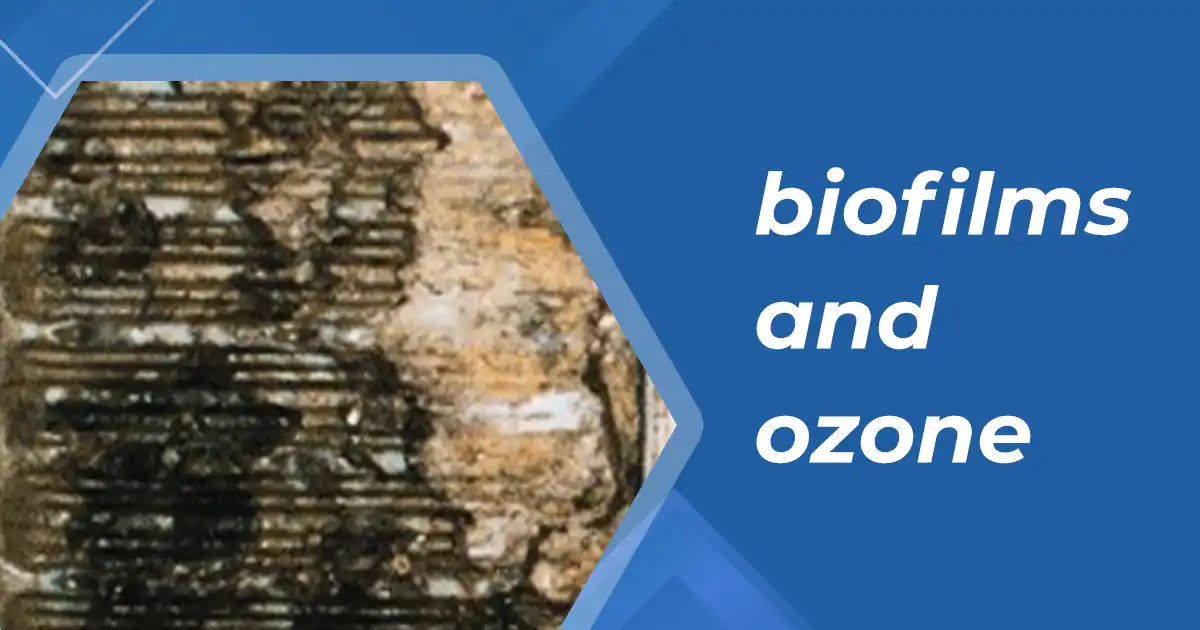BIOFILMS AND OZONE


The use of ozone in preventing biofilms have been the talking point in Industries now . Biofilms are formed on internal surfaces of pipes and tanks and are root cause for proliferation of bacteria . Biofilms are known to protect the pathogens from the actions of the disinfectant. Biofilms harbor pathogen and their dormant forms . Presence of biofilms could deteriorate the quality of water. Any scheme of disinfectant process must address this issue if a lasting solution is to be obtained.
Biofilms are formed by the absorption of an initial organic layer, to which bacteria can attach, grow and multiply. The growing bacteria and their by-products form a biofilm layer in which the polysaccharide byproducts anchor the microorganisms to the surface. The biofilm traps nutrients present in the water and makes them available to the bacteria, and also protects the bacteria from biocidal actions.
Also biofilms play a major role in corrosion reactions in recirculating cooling systems – both because of their contributions to more direct action by anaerobic bacteria, which generate local acid concentrations that directly attack steel and other ferrous alloys. Several corrosion mechanisms can exist when biofilms are present. They can establish aerobic colonies that create oxygen depletion site, allow pitting corrosion under anaerobic areas.
The use of ozone for prevention and control of biofilms have best seen in purified water loops in Pharmaceutical industry. Pharmaceutical companies using purified water use ozonated water with ozone residual to recirculate the water in the pipes when water is not being consumed. This acts as a CIP and ensures there is no formation of biofilms . The use of ozone to limit biofilms is also seen in cooling towers where biofilms have been identified as a root cause of corrosion of pipes .
Ozone controls microbiological growth, and remove or prevent biofilms, If ozone dose is designed well and the residual ozone residual ozone is adequate, ozone reaches the critical surfaces of the cooling towers like condensers , ipes , sumps, tanks etc.
Sometimes when oxygen scavenging takes place in upper layers, anaerobe colonies at the metal surface can form corrosive metabolites at these anodic sites, either because iron-oxidizing bacteria stimulate the corrosion, or sulfate reducing bacteria (SRB) develop beneath other growths in the area. Microbiologically induced corrosion is of considerable importance in cooling towers has it effects system performance and service life.
Biofilm areas may utilize oxygen rapidly creating oxygen deficiencies at metal surfaces. These are anodic and so are subject to metal loss. Some anaerobic bacteria like SRB can utilize the hydrogen released at cathodic areas, so cause cathodic depolarization, accelerating the anodic corrosion process. Metal coatings often gets removed in patches resulting in in small anodic areas surrounded by large cathodes resulting in rapid metal loss.
Role of Ozone :
Ozone can minimize these problems by destroying bio films and the “mucilage”, which lets them adhere to metal surfaces. It also can prevent bacterial growth and formation of new bio-films in the system. Other oxidizing biocides also can do this – but ozone is the strongest oxidizer and the most effective biocide.
For all this to happen sufficient ozone residual need to me maintained in required areas . Requirement of ozone dose is often controlled by the quality of the make up water , the environment , and also the turnover time of the cooling tower.


